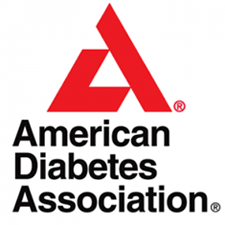November is American Diabetes Month and a good time to learn more about this widespread disease. Estimates predict that one-third of American adults will have the disease in 2050 unless steps are taken to stop it now.
Other facts include:
- 34.2 million people, or 10.5% of the U.S. population, have diabetes.
- More than 34 million people in the United States have diabetes, and 1 in 5 of them don’t know they have it.
- More than 88 million US adults—over a third—have prediabetes, and more than 84% of them don’t know they have it.
- Diabetes is the 7th leading cause of death in the United States (and may be underreported).
- Type 2 diabetes accounts for approximately 90% to 95% of all diagnosed cases of diabetes; type 1 diabetes accounts for approximately 5-10%.
- In the last 20 years, the number of adults diagnosed with diabetes has more than doubled as the American population has aged and become more overweight or obese.
- The disease impacts all social, economic and ethnic backgrounds.
- Type 1 diabetes accounts for about 5.2% of all diagnosed cases of diabetes, affecting approximately 1.6 million people.
- The annual number of children and adolescents aged 10 – 19 years diagnosed with type 2 diabetes was 5,758.
- The disease can affect many parts of the body and is associated with serious complications, such as heart disease, stroke, blindness, kidney failure, and lower-limb amputation, among other conditions.
- Medical costs and lost work and wages for people with diagnosed diabetes total $327 billion yearly.
- Medical costs for people with diabetes are twice as high as for people who don’t have diabetes.
It’s important to note that some people with type 2 diabetes have symptoms so mild that they go unnoticed and often remain undiagnosed until the condition worsens.
Common symptoms include:
- Frequent urination
- Feeling very thirsty
- Feeling hungry – even though you are eating
- Extreme fatigue
- Blurry vision
- Slow healing of cuts/bruises
- Weight loss
- Tingling, pain or numbness in hands/feet (type 2)
Anyone experiencing these symptoms should see their primary care physician right away.
About the disease:
Type 1: previously called insulin-dependent diabetes mellitus or juvenile-onset diabetes, usually occurs in the mid-teens but can happen at any age. It develops when the beta cells that produce the hormone insulin in the pancreas are destroyed. This destruction is initiated by the body’s immune system and limits or eliminates the production and secretion of insulin, the hormone required to lower blood glucose levels. To survive, people who have this type must have insulin by injection or a pump. Adults make up approximately 5 percent of type 1 diabetes cases. There is no known way to prevent type 1.
Type 2: previously called non–insulin-dependent diabetes mellitus or adult-onset diabetes, usually occurs at a later age than type 1. In adults, this type accounts for about 90 percent to 95 percent of all diagnosed cases. Type 2 usually begins with insulin resistance, a condition in which the cells primarily within the muscles, liver, and fat tissue do not use insulin properly. As the need for insulin rises, the beta cells in the pancreas lose the ability to produce sufficient quantities of the hormone. The role of insulin resistance, as opposed to beta-cell dysfunction, differs — with some individuals having primarily insulin resistance and only a minor defect in insulin secretion, and others with slight insulin resistance and primarily a lack of insulin secretion.
Factors that play a part in the risk for developing type 2 diabetes include older age; obesity; family history of diabetes; a history of gestational diabetes; impaired glucose metabolism; physical inactivity; and race/ethnicity. African- Americans, Hispanics/Latinos, American Indians, some Asians, and Native Hawaiians or other Pacific Islanders are at particularly high risk.
Gestational: Usually diagnosed during the second or third trimester of pregnancy. During pregnancy, increasing blood glucose levels increase the risk for both mother and fetus and require treatment to reduce problems. Treatment may include diet, regular physical activity or insulin. After pregnancy, 5-10% of women who experienced the gestational form of the disease will continue to have high blood glucose levels. Risk factors are similar to those for type 2.
Sources: www.cdc.gov and www.diabetes.org.


